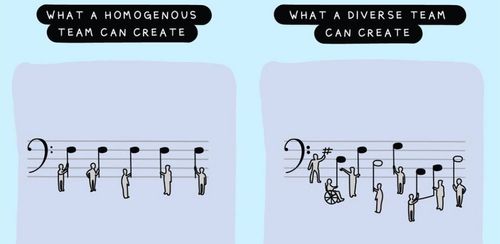

Before 9 and after 5, and in between

11 November, 2024
Share this article
Table of Contents
“I don’t want a linear career,” “I don’t even want a portfolio career. I want a portfolio life.”
Might be thoughts in our minds, maybe, but for sure, comprised in a fantastic book of Christina Wallace in The Portfolio Life: How to Future-Proof Your Career, Avoid Burnout, and Build a Life Bigger than You.
The Portfolio Life
After just about setting the scene, by the author, stating that despite being better educated than our parents, millennials are the first generation in American history to be worse off economically, I would dare do go further in geography, as some of the reasons behind, named by the author, might be the same in other places too.
So why? Because earnings have stagnated, industries have cratered, the cost of housing, health care, and education have ballooned, and “innovations” in capitalism like moving employees off the balance sheet and turning them into permalancers, gig workers, or contract hires without benefits or future prospects rippled beyond Jack Welch’s much-lauded tenure at GE to become the norm for many of the biggest companies looking to boost their quarterly reports to Wall Street.
Read also: The Pressure to Slow Down
She is quoting Anne Helen Petersen too, that was granting millennials the title of the “Burnout Generation.” “Burnout and the behaviors and weight that accompany it aren’t, in fact, something we can cure by going on vacation. It’s not limited to workers in acutely high-stress environments. And it’s not a temporary affliction: It’s the millennial condition. It’s our base temperature. It’s our background music. It’s the way things are. It’s our lives,” she wrote.
I leave these thoughts with you, as Millennial, to be very precise, a Xennial (did you know? Are the one born between 1977 and 1983). I personally let my mic to drop reading the author’s micro elevator pitch: “I’ve often described myself as fluent in three languages: English, math, and music.” Oh well, this is mine: corporate and business lover, academia sympathizer, former cello player and avid music consumer. This is why, I found some music in my ears, related to Christina’s point, that like the arts, tech startups are a place where uncertainty, creativity, and opportunity go hand in hand.
Building something from nothing can be terrifying, but it also can give you the space to think beyond the status quo and imagine something bigger, something better. And if this sounds heavy, here comes the resolution: the power of a portfolio. It is as dynamic as you are, ensuring you have what you need for each season of life without taking your eyes off your goals. Because, of course, we are more than work. More but not as quantity, but as diversity. I am sure that many of us, reading and my writing this book recensions, do love our work. But let me add a “s”. Probably we actually love our works! As we love ideas, friends, neighbors, children, colleagues, all the countless categories with plural.
Read also: Sidonia Bodianschi, Nestlé: Flexibility is part of Nestlé’s culture
Identity. Optionality. Diversification. Flexibility. These are the four pillars of the Portfolio Life about Christina Wallace details the book. The Portfolio Life isn’t about the future of work; this is the present of work. This model of separating work from identity, embracing optionality, de-risking through diversification, and gaining flexibility is one that anyone from any generation can adopt.
The term portfolio life was first coined in by Charles Handy in his book The Age of Unreason. He bristled at the notion that your life’s work should be one narrowly defined job and instead argued it could be a collection of passions, interests, and hobbies. And than she brings into her book an another fantastic reference. In the early s, business school professors Jeffrey Dyer, Hal Gregerson, and Clay Christensen undertook a six-year study to uncover the origins of creativity, particularly in innovative companies.
They studied the habits of innovative entrepreneurs and surveyed more than 3000 executives and 500 individuals who had started companies or invented products. What they found were five “discovery skills” that distinguish creatives in business: associating, questioning, observing, experimenting, and networking. The core skill—the “backbone”—is associating, anchoring the other four skills in place like the double helix of DNA. “Associating, or the ability to successfully connect seemingly unrelated questions, problems, or ideas from different fields, is central to the innovator’s DNA,” they wrote in a article in Harvard Business Review.
I agree with the statement that doing just one thing is the riskiest career move we can make. This is where a portfolio can be most powerful. Anyone who sees their career as a singular job or professional path must face the binary choice of “work” or “don’t work” at these moments. If we allow our identity to be greater than job title, and take advantage of optionality and diversification, we might find flexibility when we need it the most.
Read also: Mihaela Stîngă, Stamina: “I created the space as if people were coming to my home”
We will have many lives within this one life.
Yes, read again. Isn’t a revelation? Now let me propose some scenarios comprised by the author, in just very few words, looking at potential types of portfolio lives:
- Moonlighters: they have a primary, often full-time, responsibility and one or more secondary projects that they make work during down periods like nights and weekends. Your more traditional “day job” likely provides financial stability while your projects on the side might offer creativity, community, growth, and/or income diversification. For some, moonlighting is a model they stick with throughout their career. For others, it’s an on-ramp to a zigzag or multihyphen model. In either case, it’s an opportunity to try something new, bring in another source of income, maintain an interest and community that is outside your main line of work, or all of the above. How is moonlighting different from a side hustle? Probably it is as a choice, an opportunity to spend significant time and energy on a side project that you may or may not monetize. It could be a small entrepreneurial endeavor, a serious hobby, or a meaningful volunteer gig. It brings you fulfillment in a way that your day job may not, and you are in control of your commitments.
- Zigzaggers: as a model of interdisciplinary jumps and diagonal moves between seemingly unrelated industries and functions. Sometimes unfairly judged as being “flighty,” zigzaggers pursue their various interests (mostly) one at a time, even when the connections between their choices don’t make sense to the outside world. Zigzagging can feel harder than just picking up a side project like moonlighters do; we invest a lot of time, effort, and money into pursuing a career path and to make a zig or zag into something else completely unrelated requires both the courage to quit the first path and an investment in a new one. Another huge benefit of the zigzag model? The ability to exit an organization or industry that is on the decline or being disrupted, transporting skills to another sector with more viable prospects.
- Multihyphenates: while zigzaggers invest their energy in one principal area at a time, multihyphenates dig into multiple fields at the same time, either by pursuing several lines of work simultaneously or by merging two (or more) fields into a new line of work altogether. These are people who place more of an equal emphasis on their various professional interests, unlike moonlighters, whose side project(s) often need to take a back seat to their day job. The challenge for multihyphenates is how to fit their interests together, which often requires crafting a custom career path rather than following a road that’s already paved. Multihyphenates will tell they find their work incredibly fulfilling, standing in two (or more) worlds simultaneously.
Read also: What is remote work. Understanding the future of employment
I knew who I was this morning, but I’ve changed a few times since then.
Lewis Carroll, Alice’s Adventures in Wonderland.
I will leave you with this citation from this book, and with a few closing phrases, that hope will be an invitation for you to read the entire book, that is full with really easy to visualize, test, try or even to practice and implement tools.
So there are many ways to craft a Portfolio Life. “But at a high level, the goal is to design a combination of work, community, hobbies, volunteering, and personal time (including rest!) that collectively meets your needs by utilizing the skills, networks, and interests in your Venn diagram.
You can’t do everything all at once, but you should be able to make progress on your most important priorities at any given time. And when your priorities change or your needs transform, you can rebalance or rebuild your portfolio altogether.”
Book review
Keep up to date with our most recent articles, events and all that Pluria has to offer you.
By subscribing to the newsletter you agree with the privacy policy.

Sometimes it seems like the very invitation to slow down as a pressure itself. At least for me. I think that sometimes there are moments when we stretch ourselves, we push the boundaries, we[...]
28 October, 2024

“I don’t want a linear career,” “I don’t even want a portfolio career. I want a portfolio life.”
Might be thoughts in our minds, maybe, but for sure, comprised in a fantastic book of Christina Wallace [...]
11 November, 2024

Gentelligence: An approach on leading an intergenerational workforce that explores how bridging generational divides enhances workplace collaboration and innovation.
The authors [...]
08 January, 2025